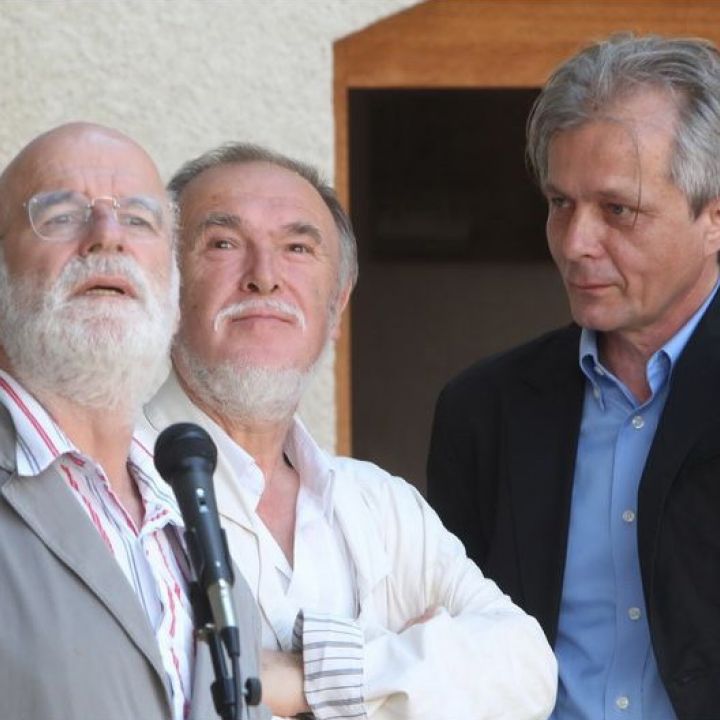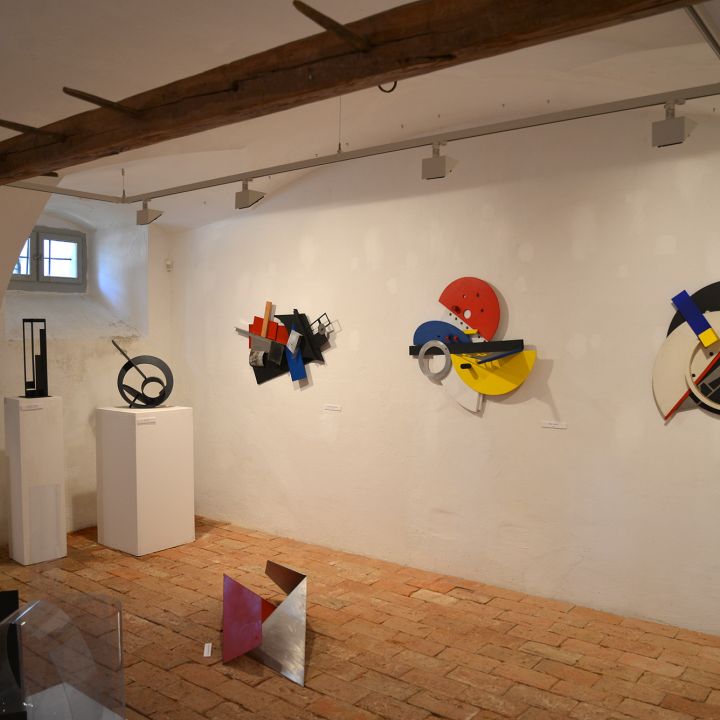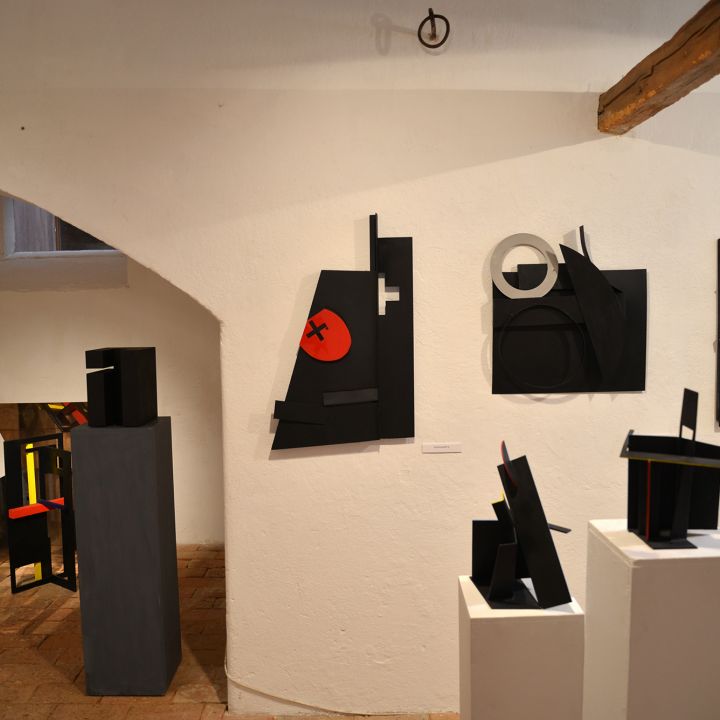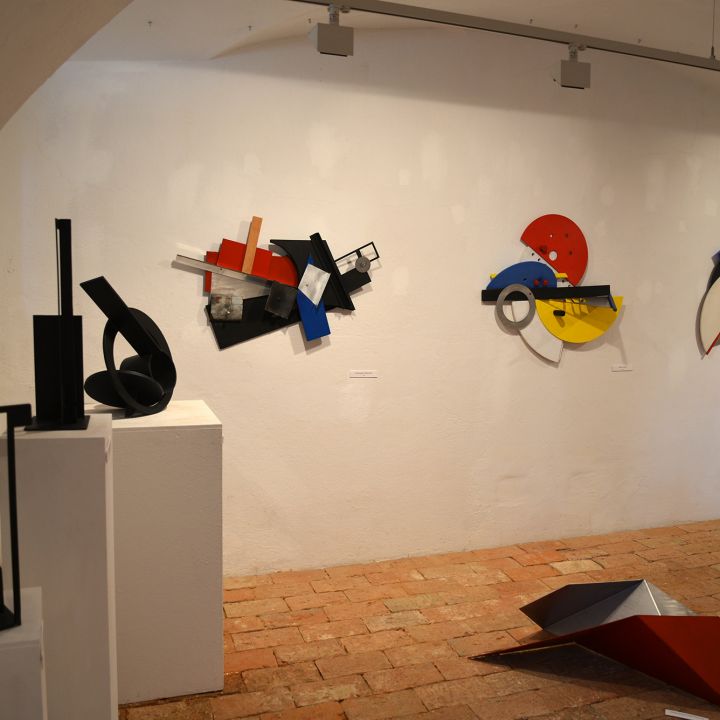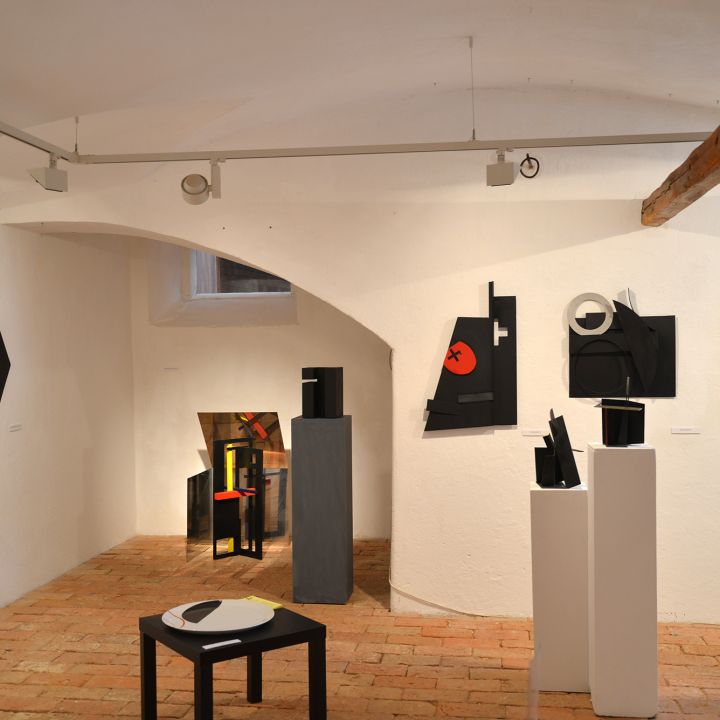We organised the jubilee exhibition of István Ézsiás in the Dubniczay Palace's Magtár Gallery/Granary. The name of Ézsiás is not unknown to the public of Veszprém, as he lived and worked in Veszprém between 1965 and 1986. During this period his artistic work and his art-organising activities had a significant impact on the formation of the visual arts in Veszprém. Veszprém also owes the Europe Sculpture Park established in 2006 to his transnational art-organising work.
The exhibition was opened by art historian László Beke, who spoke in the detail of a university lecture - to an audience already initiated by the Modern Gallery - Vass László Collection - about the works of the great masters who served as the starting point for the work of Ézsiás and the art historical effect of Constructivism, which still has an influence today. In the exhibition, which includes a large number of works the artist himself does not deny his great predecessors: he dedicates several of his space sculptures to Kassák, László Moholy-Nagy, Tibor Csiky and Amerigo Tot, thus naming his masters.
Kassák's activism is also an example for him in the sense that he himself is a tireless organiser. We only have to look at the list of artists' colonies he organised and led or the sculpture parks and other cultural institutions he created. This community activity confirms that he is not just exploring the possibilities of non-figurative art, but is working to create a kind of universal, modern 'folklore', with a language similar to the advanced techniques of metropolitan construction and which seeks new harmonies in the language of art, harmonies of pleasure and well-being.
As a born constructivist, geometry and material are the absolute themes for him. What is pure and logical is perfectly beautiful. At the same time his playfulness, his freedom to play with geometric shapes sometimes reaches the point of absurdity, even tempting the neo-dadaist when he exhibits, for example the lock mechanism of an old large gate (In Memory of my Grandfather). We sense a metaphysical depth alongside the rational coolness. In addition to the logic of engineering, there is the filtered reality of found objects, a transcendent respect for the work of the locksmith who made the locks.
He is interested not only in the harsh materials of modern architecture, steel and aluminium, glass and plastic, but also in rusty iron and wood. His series of washed-down pieces of wood from old houses in the 1990s is remarkable, very much our own, distinctively Hungarian, evoking associations that make us feel our whole lives are in it. His diverse use of materials has defined periods in his work and in presenting them we have not sought to present them chronologically, which is an easy organizing principle for jubilee exhibitions, but have given priority to the free flow of forms and motifs throughout his oeuvre. The exhibition was not confined to the interior of the gallery: sculptures were also placed in the courtyard of the Dubniczay Palace, opening up the possibility of communication with the public and with the pieces of the Károly László Collection in the courtyard-
The exhibition was curated by László Beke and Gábor Áfrány.


